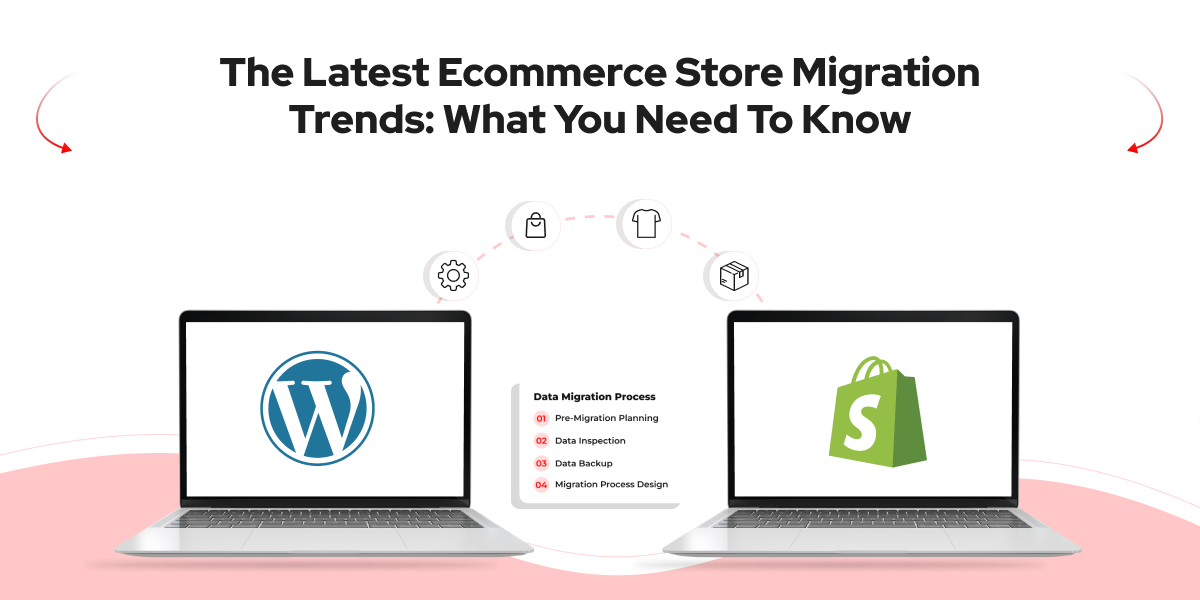The Latest Ecommerce Store Migration Trends: What You Need to Know

In today’s rapidly evolving digital landscape, ecommerce businesses often find themselves needing to migrate their online stores to new platforms for improved functionality, better user experience, and enhanced scalability.
With the rise of new technologies and changing consumer expectations, E-commerce store migration services have become crucial for businesses looking to stay ahead of the curve.
However, understanding the latest E-commerce Store Migration Trends is essential to executing a smooth and successful migration. From improved SEO strategies to cross-platform integration, here’s a look at what you need to know about ecommerce migration in 2024.
7 Latest Ecommerce Store Migration Trends
As the e-commerce landscape continues to evolve, businesses must stay agile and adaptable to remain competitive. One critical strategy involves upgrading or switching platforms to take advantage of new features and enhanced capabilities.
This is where E-commerce store migration services play a pivotal role, ensuring a seamless transition that minimizes downtime and maintains the integrity of the store’s data.
Today’s E-commerce Store Migration Trends reflect the growing emphasis on optimizing user experience, leveraging cloud-based solutions, and incorporating AI-driven tools for efficient data migration.
With platforms like Shopify leading the way, Shopify migration services are becoming increasingly popular for businesses looking to unlock greater functionality and scalability.
However, it’s important to be aware of potential Challenges in E-commerce Store Migration, such as data loss, design compatibility, and SEO disruptions, to make the process as smooth and successful as possible.
Understanding these trends and challenges will help you make informed decisions and maximize the benefits of a platform upgrade. Hence read the following article till the end.
1. Increased Focus on User Experience During Migration
User experience (UX) is a key driver in ecommerce success, and it’s no surprise that businesses prioritize UX improvements during store migration.
One of the prominent E-commerce Store Migration Trends is ensuring a seamless user experience, whether it’s through faster load times, mobile-friendly designs, or easy navigation.
Shopify, for instance, offers robust tools and integrations that allow businesses to enhance the user experience during migration, making Shopify migration services a popular choice among businesses.
2. Migrating for Scalability and Performance
Ecommerce platforms are evolving, and businesses are now migrating not only for better features but also for scalability.
Whether expanding product catalogs or preparing for high traffic volumes during peak seasons, a platform that offers robust performance is essential. Migrating to a scalable platform like Shopify can help businesses grow without compromising on performance.
Challenges in E-commerce Store Migration, such as data transfer and reconfiguration of store elements, are being addressed with advanced automation tools that reduce downtime and errors.
3. Leveraging SEO Enhancements During Migration
Another key trend is utilizing E-commerce store migration services to optimize search engine rankings. Businesses are now investing in SEO strategies during migration to avoid losing organic traffic and to improve visibility.
This includes preserving URL structures, setting up proper redirects, and optimizing meta tags. Working with specialized Shopify migration services can help businesses handle these SEO challenges seamlessly, ensuring that the store’s SEO equity remains intact.
4. Omnichannel Integration is On the Rise
Omnichannel integration has become a top priority for ecommerce brands, and store migration is the perfect opportunity to implement this strategy.
By migrating to platforms that support omnichannel experiences, businesses can integrate various sales channels, from social media to in-store POS systems, creating a unified shopping experience for customers.
Platforms like Shopify provide comprehensive omnichannel solutions, making it easier for brands to manage multiple channels from a single platform.
5. Improved Data Migration Tools and Processes
Migrating large datasets, including customer information, product listings, and order histories, can be challenging. However, new data migration tools and automation processes are making it easier than ever to transfer data with minimal disruptions.
These tools ensure that all information is accurately mapped and securely transferred, reducing the risk of data loss.
Challenges in E-commerce Store Migration related to data integrity are being mitigated with these advanced solutions, helping businesses complete the migration process smoothly.
6. Adoption of Headless Commerce Architecture
The adoption of headless commerce is gaining momentum as more businesses seek flexibility in front-end and back-end development. Headless commerce allows the decoupling of the front-end user experience from the back-end system, offering greater customization options.
Migrating to a headless commerce setup is becoming one of the latest E-commerce Store Migration Trends, as it enables businesses to deliver unique and highly optimized shopping experiences.
7. Migration as a Strategy for Rebranding
Store migration is increasingly being used as an opportunity for rebranding and redesign. Businesses are taking advantage of this transition to update their brand image, improve the look and feel of their site, and better align with modern design trends.
This approach not only gives the business a fresh start but also helps in engaging a broader audience. With Shopify migration services, brands can seamlessly integrate new branding elements while ensuring a smooth migration process.
Final Thoughts
The latest E-commerce Store Migration Trends highlight the importance of staying adaptable and responsive to changes in the digital landscape.
Whether it’s enhancing user experience, adopting new technologies like headless commerce, or leveraging SEO strategies, ecommerce migration is more than just a technical process—it’s a strategic move that can set your business up for future success.
Partnering with experienced E-commerce store migration services like Shopify migration services can help businesses navigate the complexities of migration, minimize downtime, and ensure a seamless transition that positions them for growth in the competitive ecommerce marketplace.

